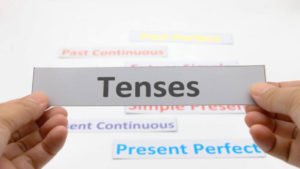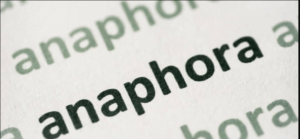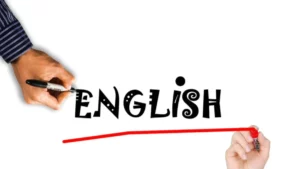A rhyme is a repetition of similar sounds in the final stressed syllables and any following syllables of two or more words. Such kinds of perfect rhyming are very consciously used so that a musical or aesthetic effect can be created in the final position of lines within the already existing poems or song.
Rhyming words or sentences are identified on the basis of whether they sound the same or similar. For example: car and war rhyme; house and spouse rhyme. However, if the two words sound different, they do not rhyme. For example: bar and can do not rhyme; house and tree do not rhyme.
Though, we do not have very accurate data about the origin or history of rhyming we can still make some wild guesses.
- Types of rhyme
- Easiest Language to Rhyme
- Toughest Language to Rhyme
- How to write a simple rhyming poem?
- Steps to write a Rhyme
- Some Types of Poems that don’t Rhyme.
- Benefits of good rhyming skills
- Free Rhyming Dictionaries and Digital Tools Online
- Fun rhyming apps for kids
- Rhyming in other languages
- Does Rhyming helps Memory?
- What is Mnemonics?
- Frequently Asked Questions.
Types of rhyme
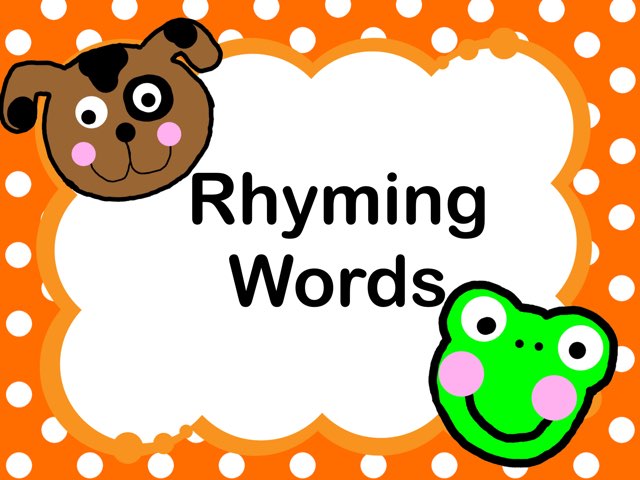
| Masculine Rhyme | Rhyme between the final stressed syllables of two lines. |
| Feminine Rhyme | It requires both stressed and unstressed syllables |
| End Rhyme | Can be either Masculine or Feminine. |
Rhyming can actually take many forms. Some of them includes
Masculine Rhyme
A masculine rhyme is a rhyme between only the final stressed syllables of two lines.
Feminine Rhyme
Feminine rhyme is a multi-syllable rhyme which requires both stressed and unstressed syllables to rhyme with their respective counterparts. For example, the words “crazy” and “lazy” form feminine rhymes. The syllables “cra” and “la” are stressed rhymes, and “zy” and “zy” are unstressed rhymes.
End Rhyme
End rhyme occurs between the final words on two particular lines of poetry. These type of rhymes can be either masculine (for instance “below” and “furlough”) or feminine (for instance “actual” and “factual”).
Easiest Language to Rhyme
If you think very precisely then the best language one can pick for rhyming poetry would actually be none other than one’s own mother tongue. Truly, there is no other language that can match and will be able to reach the level of one’s own mother tongue. No other language will be able to give the desired effect, other than own mother tongue. But yes, if you ask the same question globally then Mandarin Chinese can actually be a good match. Because the tuneless syllables of Mandarin Chinese add up to no more than 441 and this feature greatly helps one in performing the task of rhyming.
Toughest Language to Rhyme
Comparatively, the Modern Mandarin language has a very limited possible number of syllables and hence this feature makes it very difficult to rhyme in Mandarin. Moreover, the traditional Chinese rhyme schemes make it more difficult by requiring that a rhyme be based not on words that sound similar now, but those that used to sound similar in some earlier period. As you can see, this further complicates the process.
How to write a simple rhyming poem?
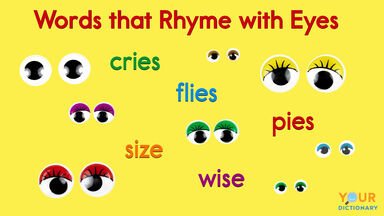
The first step in writing a good rhyming poem is jotting down your ideas down as they come to you. It is important to write as soon as the ideas come to you before they vanish. This practice will help you to catch your creative juices as they come and to ensure that you don’t forget the ideas that you have for your rhymes. Hence, as soon as you get an idea for a poem, write it down quickly so you won’t forget it.
Always be looking around very actively for inspiration. Maybe in the beginning you are not very sure about what to write your poem about. At such times, you can simply pick an object, animal, person, or place as your subject matter to begin. In the very beginning, you do not actually need to write about something extraordinary. You can just simply choose something that seems interesting to you and you feel that you can write well about it.
Steps to write a Rhyme
Leave yourself free while writing. Freely think about your chosen topic. As soon as you get an idea for a poem, just start writing! In the next step, just jot down all of your ideas for the poem onto paper without worrying about the structure or rhyme scheme at first. Also, you can divide it into lines, or write it in prose as your first draft.

In the next step, make a list of rhyming words for your subject. This exercise will help you a lit in the later stage. Also, one more great way to brainstorm for a rhyming poem is that you can make a list of rhyming words that are related to your subject. This list may be long or short depending on what you are writing about. You may try writing words that describe the subject and then you can look for rhyming pairs to each of those words.
Some Types of Poems that don’t Rhyme.
Poetry without rhyming words is generally called ‘Free verse‘. It is an open form of poetry that generally doesn’t follow any musical pattern or rhyming pattern. We have provided you with some examples of this kind of poetry.
When I heard the learn’d astronomer,
When the proofs, the figures, were ranged in columns before me,
How soon unaccountable I became tired and sick,
Till rising and gliding out I wondered off by myself,
In the mystical moist night-air, and from time to time,
Look’d up in perfect silence at the stars.
This is poetry written by Walt Whitman. He used Free Verse in this poetry and rhyming words are not found here.
Click here to know about English story Writers
Rhyming Words (Worksheet) – Download
Benefits of good rhyming skills
The learning and good knowledge of rhyming words helps to get to a basic level of phonemic awareness.
Hence, if you work on developing a child’s phonological awareness then it will be an important part of developing your child as a reader. The ability of young children to identify rhyme units is an important component of phonological awareness. Several researches across the world show that students actually benefit from direct instruction on rhyme recognition paired with fun activities which help to target this skill.
Free Rhyming Dictionaries and Digital Tools Online
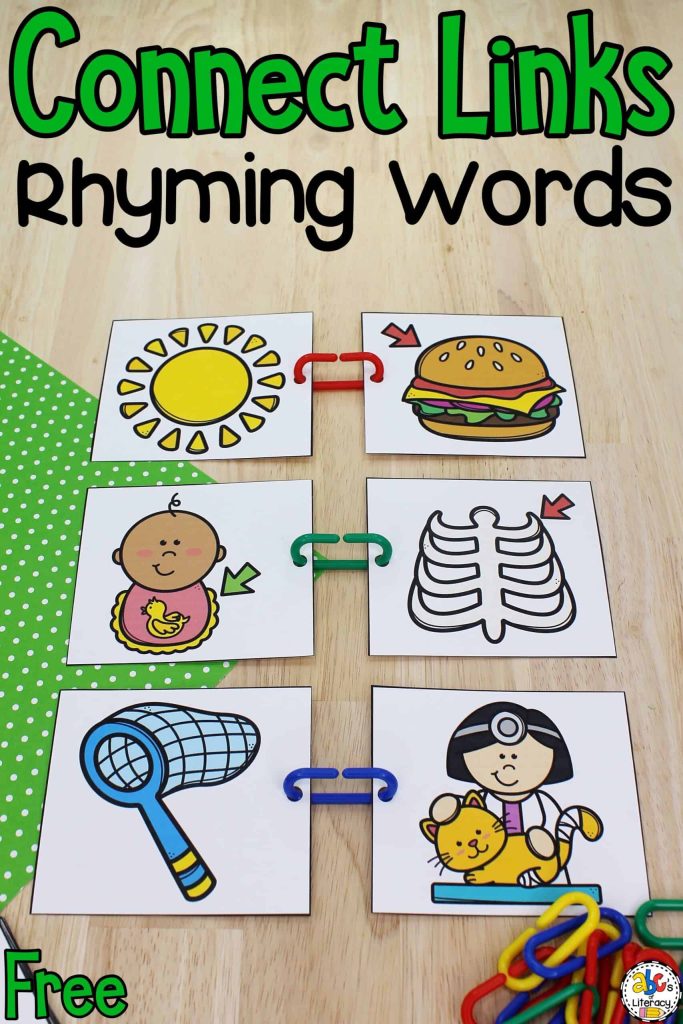
When you start practicing rhyming then it is sure shot that you will need some kind of help or assistance. Given below are few free rhyming dictionaries and digital tools that will help you in learning and practicing rhyming easily.
Do not know how to write poem or poetry? No worries. Click here to read article.
Rhyme Zone
It’s terribly frustrating to find that a word doesn’t have an explicit rhyme. However, with Rhyme Zone, you will simply notice a ensuing smartest thing. The website’s program can explore for an explicit match, however if it doesn’t notice one it’ll come an inventory of similar-sounding words.
You’ll outline your search in an exceedingly range of the way, as well as close to rhymes, similar-sounding words, or connected words. For a lot of relevant listings, you’ll conjointly organize the search results by each range of syllables and letters.
Rhyme Brain
This is a multilingual end-rhymed web site that has French, German, English and Spanish, among different languages. The interface couldn’t be easier to use; you sort the word you want to rhyme into the search bar and also the results area unit denote in tables on a similar page. Rhyme Brain conjointly has an in depth journal on end-rhymed words and initial rhyme that you just will pay hours browsing through.
Wiki-Sites
In keeping with different Wiki-sites, this end-rhymed program is community-based. The interface contains a range of search parameters to settle on from, and there’s conjointly a discussion forum wherever you’ll raise queries if you’re having hassle with a selected word. This provides a awfully useful platform for poets and song-writers to share concepts.
Word Central
Merriam-Webster is that the developer of Word Central thus you shouldn’t be in the least stunned to search out that the location contains a Brobdingnagian info of end-rhyme words. What’s a lot of, at Word Central you’ll produce your own lexicon beside word definitions. thus if you can’t notice a word that rhymes the method you’d like, you’ll simply invent one instead!
Rhymes & Chimes
As well as providing end-rhymed words, Rhymes and Chimes has search parameters for translations, phrases, quotes, and connected merchandise.
Reading Rockets
This academic web site can take you all the method from the fundamentals to the excellent components of end-rhyme and play. There’s conjointly a range of printable material out there on Reading Rockets, additionally as games and activities you’ll use on the location.
Fun rhyming apps for kids
Mentioned below are top six apps that help kids to learn rhyming quickly and in a fun filled manner.
KidloLand

KidloLand is an app with wide-ranging selection of amazing nursery rhymes and sweet simple songs. These rhymes and songs include Twinkle Twinkle Little Star, Mary had a little Lamb, Old MacDonald, Itsy Bitsy Spider, Wheels on the Bus, If You Are Happy, London Bridge, BINGO, etc. This app is undoubtedly one of the best free apps available for kids. The rhymes of this app are divided into several sub categories which cover various themes of rhymes. This app is a must have in your bucket list if you are planning to make your child learn rhyming.
Zoolingo Games

The app Zoolingo has a collection of hundreds of popular nursery rhymes. This app can be a great start for your children in learning the basics of rhyming. Also, this app is available in sixteen different languages. This app is perfect for singalongs.
The fabulous nursery rhymes of Zoolingo are extremely easy to repeat. Also, this app has the amazing classic rhymes such as Old McDonald in a Farm, Twinkle Twinkle Little Star, Itsy Bitsy Spider, and many more. Your kids can sing along with these songs on Zoolingo.
ChuChu TV

ChuChuTV Nursery Rhymes is more than a perfect app for all the new parents out there who want to improve their child’s development process and their own parenting skills as well. This app allows the parents to easily download the nursery rhymes videos offline and watch them later on depending upon their comfort anywhere, anytime on any mobile device.
ChuChu Tv nursery rhyme app provides a very safe and an extremely kid-friendly viewing experience for kids of all ages. This app makes the parent tension free. The nursery rhymes app also supports six different languages – English, US English, Spanish, Portuguese, French, Tamil & Hindi.
Storybook Rhymes Volume 1

Storybook rhymes Volume 1 is an extremely interactive app that simply encourages early learning in kids with its dynamic characters, smartly engaging music, sing along songs, animations and kid’s all time favorite nursery rhymes. This nursery rhymes app is self-voicing and children do not necessarily need to visually see the screen to enjoy the fun nursery rhymes and interactive points.
Learn the Art of Storytelling with Podium School.
Pinkfong Songs
Pinkfong Songs and stories has a wide variety of Pinkfong’s videos, songs, dances and stories for children so that they can explore the world. This app has a collection of many rhymes ranging from short songs to long animation stories. This is an award-winning interactive app which simply encourage the kids to sing, play and learn together. This nursery rhymes app is available in four different languages as well.
The app has a full collection of kids’ favorite sing-along songs. This app is suitable for the whole family to enjoy together. There are also many songs to learn phonics and key vocabularies. You can now clearly see that this app is going to fill your child with great knowledge.
English Nursery Rhymes
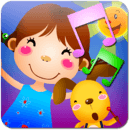
This app has a nursery rhymes collection of 28 animated nursery rhymes. Also, there are many subtitles available for children so that they can easily join in. Few of the nursery rhymes featured in this app are: Twinkle Twinkle Little Star, Baa Baa Black Sheep, London Bridge, Rock-a-bye Baby and Wheels on the Bus.
Rhyming in other languages
Most of us are only familiar with either Hindi or English rhymes but rhyming is not unique to only these two languages. We have rhyming in several other languages including japanese, Chinese, French and a lot more. In fact, there are several other languages which are actually easier to rhyme in comparison with English due to differences in their syllable structure.
Mentioned below are few rhymes in different languages :
Rhymes in French.
Une poule sur un mur
Une poule sur un mur
Qui picote du pain dur
Picoti, picota
Lève la queue
Et puis s’en va
Rhymes in Hindi.
आलू कचालू बेटा कहाँ गए थे,
बन्दर की झोपडी में सो रहे थे,
बन्दर ने लात मारी रो रहे थे,
मम्मी ने प्यार किया हंस रहे थे,
पापा ने पैसे दिए नाच रहे थे,
भैया ने लड्डू दिए खा रहे थे…
Rhymes in English.
One, two, three, four, five,
Once I caught a fish alive,
Six, seven, eight, nine, ten,
Then I let go again.
Why did you let it go?
Because it bit my finger so.
Which finger did it bite?
This little finger on the right
Rhymes in Spanish.
Un elefante
no es elegante
no usa sombrero
corbata ni guantes
La trompa muy larga,
la panza gigante,
las patas muy gruesas
y orejas muy grandes
Pero eso, ya sabes,
no es lo importante
pues ya es especial
ser un elefante
Does Rhyming helps Memory?
Have you ever given thought to the fact that remembering the grocery list is comparatively tougher than remembering the entire lyrics of our favourite song! We tend to become forgetful so easily and this becomes more or less a daily habit. But why is it so that we do not forget the poem we have heard last week from our younger sibling but we do forget the instructions of making some dish which our mother gave us just an hour before?
Well, it is because of the fact that our brains has a habit to remember rhymes or rhyming sounds because they are easily linked together for us by sound. So, when you have a poem or a list of items that rhymes, it will be much easier to remember them than a random list of other words.
Hence, it is very clear by now that rhyming definitely helps a person with his memory. For example, just think about the famous nursery rhyme, “One, two, buckle my shoe,” and now you easily are able to sit and recite it. Next, when it comes to remember other things which are of utmost importance, you need to actually utilise the power of rhymes smartly. What you can do is to match up certain words which you want to remember with other memorable but rhyming words to help you remember things easily.
What is Mnemonics?
Mnemonic in its basic meaning is any technique of learning that aids or assists a person with greater information retention and remembering in a better way. Mnemonic helps to increase the memory and helps a person to get better understanding of the facts, concepts and data.
Now, Rhyme mnemonics in particular is the use of a short set of rhyming lines that help an individual to remember anything. In such cases, the end of each line has a tendency to end in a similar sound rhythm which creates a pattern that is comparatively easier to remember. For example, in case of images, rhymes makes it easier for our brains to encode information.
Frequently Asked Questions.
What is it called when words almost rhyme but not completely?
When words do not rhyme completely but they sound almost similar; then they are called half rhyme, near rhyme, slant rhyme, or oblique rhyme.
How many syllables are there in rhyme?
There is only one syllable in rhyme.
What is eye rhyme literature?
Eye rhyme literature is an imperfect rhyme in which two words are spelled similarly but pronounced differently. For example, love and move.
What type of skill is rhyming?
Rhyming is a very unique early phonological awareness (listening) skill.
What is an eye- rhyme in rhyming?
Eye rhyme is an imperfect form of rhyming. In Eye rhyming two words are spelled similarly but pronounced differently. For example, groove and move, dough and though, dome and home, and laughter and daughter.
Is English the only Language you can rhyme in?
Most of the time, we counter the English rhyme only. But there are many more different language which are actually better suitable for rhyming. Example of such languages can be German, Greek and others.
What is it that rhyming can add to poetry?
Rhyming acts like the cherry on the top of the cake of poetry. Any regular rhyme aids the memory for recitation and gives immense pleasure to the listeners. A pattern of rhyme, called a scheme, also helps establish the form. For example, the English sonnet has an “abab cdcd efef gg” scheme, ending with a couplet.
What is alliteration in a poem?
Alliteration is the repetition of the same sound at the start of a series of words in succession whose purpose is to provide an audible pulse that gives a piece of writing a lulling, lyrical, and/or emotive effect.
Share with your friends





